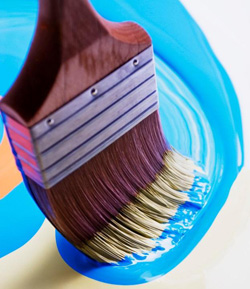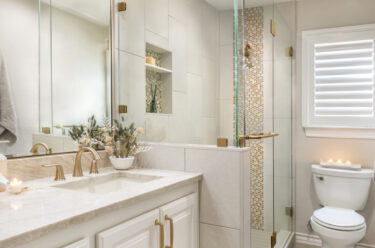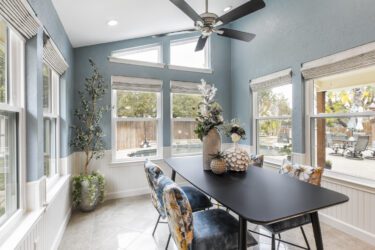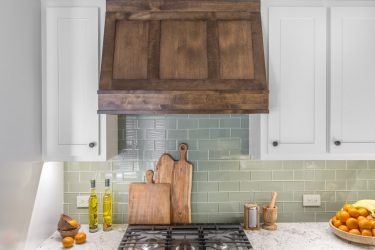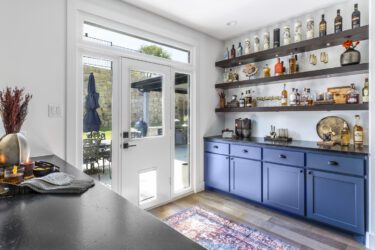As if picking colors isn’t hard enough, the paint sheen, or gloss, is just as important to the final look of a design project. The sheen reflects varying degrees of light. The old school standard rule of thumb used to be gloss on trim, semi-gloss on walls and flat on the ceiling. Flat was never used on trim or walls because it was porous, and difficult—if not impossible—to clean. For gloss applications, designers were locked into using the standard rule of thumb because of the way the gloss functioned.
Thanks to advancements in paint technology, the old school standard rules of thumb don’t apply anymore. There are flat paints that can be scrubbed clean of most any mess and high gloss is only used for design purposes. The paint of today is more like a plastic coating rather than the oil and lead of yesteryear. Now, there is a lot more flexibility to use light reflection in the design process, and a good designer will use the art of sheen selection to make subtle changes to the project that have a surprising impact on the finished look.
Here are the five most common paint sheens and some ideas on how to use them in design. Be aware that these are not hard and fast rules because the terms are not standardized industry-wide. There are many inconsistences in sheens between different products. You may have to work with different sheens to get the effect you want. One of the tricks is that the sheen level can affect the appearance of the color.
Flat (sometimes called matte) Finish
Flat is very popular these days because the finish is basically non-reflective. Without the light reflection, the color is richer and has more depth to the tone. The other benefit is that without light reflection, blemishes on the surface aren’t as noticeable. One thing that hasn’t changed from the old school way of thinking is that flat is most always the best choice for the ceiling.
Eggshell Finish
The idea here is that the finish will have a very low reflective nature, like a dry egg shell. This is one of the most popular choices for walls. The low gloss still gives the color a nice richness and depth.
Satin Finish
Satin finish paint has a smooth velvety look that looks nice on trim, doors and windows. It doesn’t sport the depth of color as well as eggshell and flat, but it gives a crisp finished look to trims.
Semi-Gloss
Semi-gloss paint is most often used on doors, trim, and cabinets in kitchens and bathrooms. It is easily cleaned and lays down a nice, subtle shine, without being too shiny looking. With its high light reflectivity, it’s unforgiving to poorly prepared surfaces. Anything not sanded smoothly will stand out.
High Gloss
High gloss creates a shiny surface that reflects light. It can look like wax or high sheen plastic if applied properly. It’s not used that often in homes any more. We use high gloss when we are looking for a dramatic look on cabinets or trim in a formal or contemporary setting. The finish is completely unforgiving to poor surface preparation. Applying it is an art in itself; it has to be evenly distributed, and the environment has to be super clean because if dust gets in it, it ruins the look of the finish.
It seems counterintuitive to most clients, but less sheen is better for the final look and feel of a project. If you need help picking colors and sheens, please contact us, and we will be happy to help.
Our favorite paint is http://www.sherwin-williams.com. They have superior products and wonderful educational information.
Take care,
Mike

